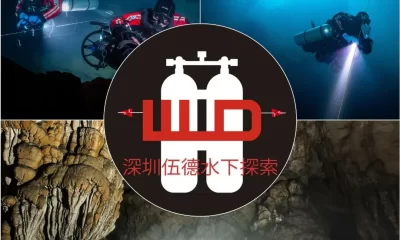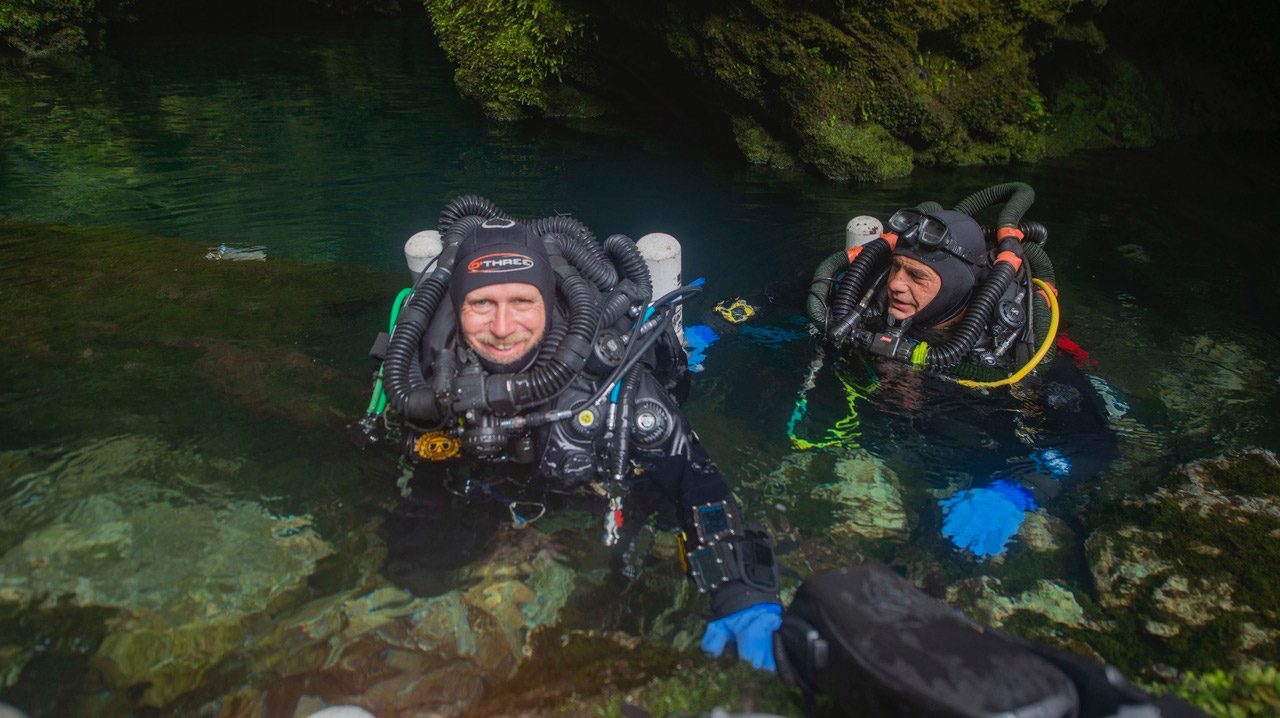
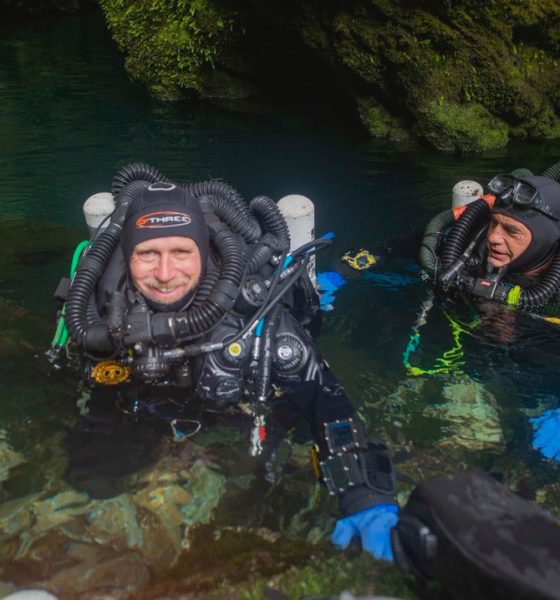
Equipment
Hydrogen, At Last?
In February, Dr. Richard Harris aka Dr. Harry and the Wet Mules conducted the world’s first hydrogen rebreather dive to a test depth of 230 m at Pearse Resurgence, New Zealand. The purpose of the 13 hour dive was to determine the practicality and efficacy of using hydrogen to improve safety and performance of über-deep scuba dives. Harris will present the work up and details of the dive at Rebreather Forum 4 in Valletta, Malta on 22 April. In preparation, we thought it useful to review some of the history and research regarding hydrogen diving. Here’s what you need to know.
By Michael Menduno. Header image: Dr. Richard Harris and Craig Challen at the entrance of Pearse Resurgence . Photo courtesy of Dr. Simon Mitchell.
🎶 Pre-dive clicklist: Hydrogen Song by Peter Weatherall, the singing scientist 🎶
Harris’s recent dive is the latest of an estimated 54 experimental hydrogen dives that have been conducted over the last 80 years by military, commercial and, yes, technical divers. It was the first reported hydrogen dive made on a rebreather, in this case, dual Megalodons connected by the bailout valve (BOV)—one charged with trimix diluent, the other with hydreliox (O2, H2, He). It was also the first hydrogen dive conducted in a cave.

The idea of using hydrogen to improve diver safety and performance on deep dives has been a long time in the making. The Swedish Navy began a program led by 26-year-old diving inventor and engineer Arne Zetterström (1917-1945)—think a young Lamar Hires, Bill Stone, or perhaps Jona Silverstein—who was the first to experiment with hydrogen as a possible deep diving gas during World War II. At the time, the United States had the only known helium reserves. And, because of its use for military “barrage balloons” filled with non-flammable lighter-than-air gas, the US had instituted the “Helium Control Act of 1927,” which forbade the export of helium. Zetterström’s mission was to determine if hydrogen was a possible alternative.
Zetterström, whose father was a Swedish naval architect, developed a method for producing hydrogen from ammonia. He had worked out the flammability issues (hydrogen gas is explosive when mixed with more than 4% oxygen), and calculated a rudimentary decompression plan for hydrox. Ultimately, he conducted six surface-supplied dives on hydrox 4/96 (4% O2, 96% H2) to: 40m/131 ft, 70m/230 ft, 110m/361 ft and 160m/525 ft, with one case of decompression sickness (DCS). Bottom times ranged from 10-25 min with 140 min of air and oxygen decompression. Tragically, Zetterström was killed on the 160 m dive in 1945, when tenders mistakenly pulled him up from depth without decompression.
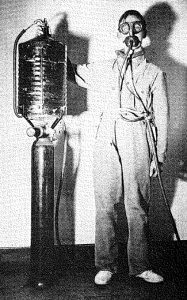
It was nearly 40 years before interest in hydrogen as a diving gas was rekindled. At the time, commercial diving was getting deeper as North Sea oil production boomed, and commercial diving contractors were pushing the limits of heliox (an oxygen helium mix) diving as depths approached and exceeded 306 m/1000 ft. They believed that hydrogen might offer a solution. Hydrogen is half the molecular weight of helium, reducing breathing gas density, and research by Duke University’s Dr. Peter Bennett on trimix suggested that the narcotic properties of hydrogen might ameliorate the effects of High Pressure Nervous Syndrome (HPNS), which is a major limiting factor on heliox dives.
Commercial Divers Do It Deeper
Pioneering French commercial diving contractor Comex (Compagnie maritime d’expertises) launched its hydrogen program dubbed Hydra in 1982. Beginning with animal experiments, over the next decade, Comex conducted a series of manned wet and chamber complex dives, Hydra II-Hydra X, to determine the efficacy of hydrogen diving.
In February 1987, the Undersea Hyperbaric Medical Society held its 33rd workshop in Wilmington, North Carolina, titled “Hydrogen As A Diving Gas,” which included presentations by Comex. The following year, during Hydra VIII, four Comex divers and two French Navy divers successfully performed six days of work at 530 m/1738 ft on an offshore platform near Marseille with dramatically improved diver performance when compared to heliox diving.
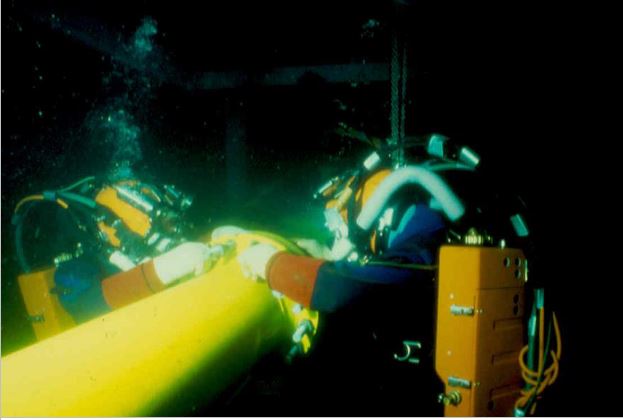
In 1991, Comex conducted a final record chamber dive to 701 m/2300 ft at its Marseille headquarters. Serendipitously, as then publisher and editor-in-chief of aquaCORPS Journal, I was invited to witness the dive, which was in progress in the Comex chamber complex. Heady stuff indeed! Special thanks to decompression engineer, JP Imbert, who worked at Comex at the time, and diving safety officer George Arnoux who made that possible.
Following the UHMS Hydrogen Meeting, the US Navy’s Naval Medical Research Institute (NMRI), in Bethesda, Maryland, began a program that lasted more than a decade (1990-2001) researching hydrogen under the direction of research physiologist Dr. Susan Kayar. Kayar and her team showed that breathing hyperbaric hydrogen had no ill biochemical effects on mammals that had been previously overlooked.
Next they demonstrated the feasibility of “biochemical decompression,” aka biodec, which reduced the incidence of DCS in in animal test subjects following hydrogen dives by roughly half. With a human biodec protocol, divers would take a capsule of special mammal-friendly, H2-eating gut bugs—think probiotics—which would consume the H2 gas and convert it to methane that would then be released to the atmosphere through the path of least resistance. Small wonder that Dr. Kayar, who measured flatulence from pigs and rats decompressing from hydrogen, became known as the “Queen of Farts.”
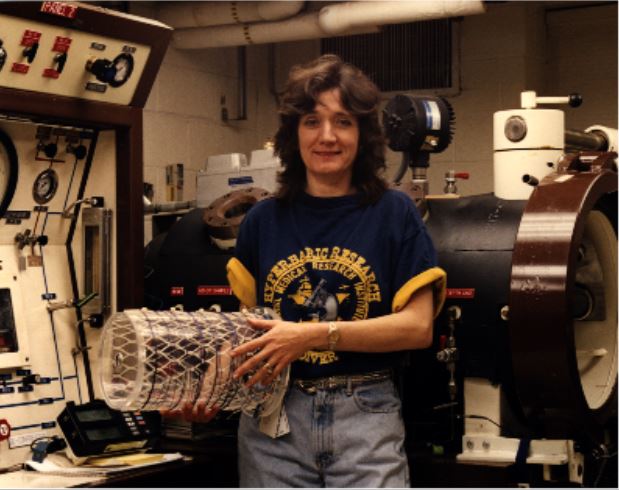
Comex and the research by the US Navy demonstrated that hydrogen could significantly improve the safety and performance of working divers, and in doing so extend their range, much as the introduction of helium breathing mixes has been able to greatly improve diver safety and performance over deep air diving. Unfortunately, hydrogen was very expensive to mix and handle in a saturation diving environment, and it arguably arrived on the scene too late.
By the late 1980s, the commercial diving industry was already transitioning to robotics, especially for deep diving, due to the economics—it was far less expensive and safer to put a remotely operated vehicle (ROV) at depth for many tasks, instead of a diver. As a result, hydrogen was never “operationalized” as a diving gas, and has remained an exotic vestige of hyperbaric research in search of an application.
Bring on The Tekkies
Hydrogen was on the minds of tech pioneers during the emergence of the “technical diving revolution” i.e., the adoption of mixed gas technology, in the early 1990s. Legendary cave explorer Sheck Exley cited hydrogen in an interview I did with him for aquaCORPS,“Exley on Mix,” in the fall of 1991. Exley had already made several sub-260 m/852 ft dives using trimix at a time when the majority of the sport diving industry would have been hard pressed to spell N-I-T-R-O-X, let alone know what it was used for. Ironically, that was the year that Skin Diver magazine editor Bill Gleason ingloriously dubbed nitrox the “Voodoo Gas,” a moniker that could arguably better be applied to hydrogen, whether hydrox or hydreliox.
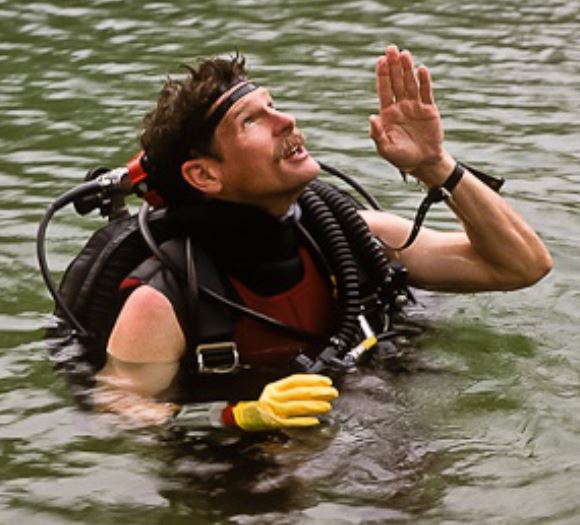
As Exley explained, “From what I’ve been learning, there seems to be some real potential for hydreliox, though no one has looked at its use for deep bounce dives. With the kind of compression rates that I was dealing with at Mante, you need the heavy nitrogen to avoid HPNS, but I’d rather have the hydrogen.”
You may be surprised to learn that Harris and the Wet Mules are not the first technical divers to conduct an experimental dive with hydrogen. That distinction goes to diving engineer Åke Larsson, and six tech diving colleagues. Fortuitously, Larsson worked at the Hydrox lab Swedish Defense & Research Institute under Dr. Hans Örnhagen.
In 2011, in collaboration with the Swedish Diving History Society (SDHF) and Royal Institute of Technology Diving Club, they formed the Hydrox Project led by fellow techie Ola Lindh, with the goal of revisiting the work of Zetterström. Specifically, they focused on developing a mixing station, procedures and measuring system, and investigated flammability suppression, in the hopes of recreating Zetterström’s 40m dive.
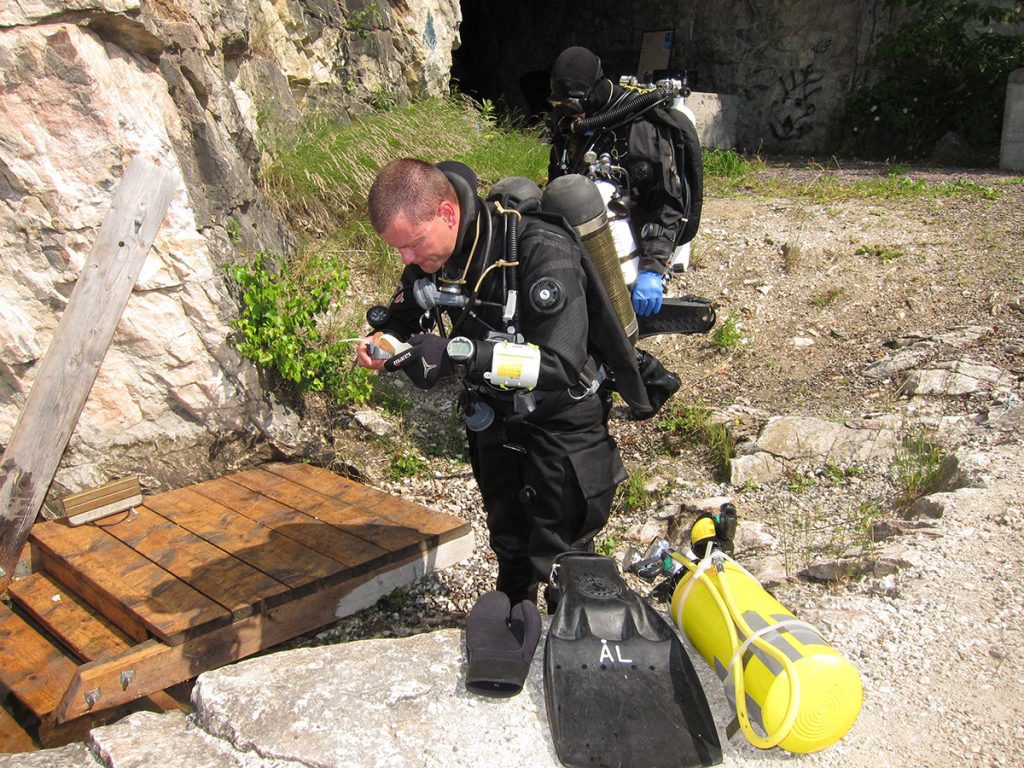
In July 2012, the seven Hydrox Project divers each completed a single hydrox open circuit dive to 42 m/138 ft in an isolated quarry. The divers descended on air back gas, switched to the hydrox 4/96 stage cylinder at depth and breathed for five minutes, switched back, and then began a padded deco schedule on air, no oxygen for operational simplicity, using an extrapolated ZH-L16 algorithm. According to Larsson, “Breathing hydrox was a surprisingly pleasant experience! We planned the dive using air, so I was slightly narked but feeling well at 42 m. When we switched to hydrox gas, it felt cold but almost slippery and very, very easy to breathe compared to air. My brain cleared up in less than a minute and the nitrogen narcosis was gone.”
Where Art Thou H2?
Though the Hydrox Project dives were technically not tech dives, and not very deep, there is reason to believe that hydrogen could improve diving safety and performance on über-deep untethered dives. First, and most importantly, hydrogen can improve the work of breathing (WOB), which is a major risk factor on deep dives.
The gas density of trimix 4/90 (4% O2, 90% He, balance N2) at 250 m/816 ft is 7.63 grams/liter, considerably above the 6.0 g/l threshold where the risk of a negative outcome dramatically increases. Note: it is believed that a high WOB killed Dave Shaw who suffered respiratory insufficiency during a 270 m/880 ft dive at Bushmansgat. With half the molecular weight of helium, hydrogen could reduce gas density to safe levels resulting in lowered work of breathing. For example, the density of hydreliox 4/30 (4%O2, 30% H2, balance He) at 250 m is 4.56 g/l, equivalent to breathing normoxic trimix 21/35 at 40 m.
Hydrogen, which is narcotic at deep depths (PH2≥ 15-20 bar), has also been shown to ameliorate HPNS, which is another major limiting factor at depth. And with market interest in hydrogen as a fuel source on the rise, the gas is plentiful, and cheap relative to helium, though mixing costs could be pricey.
However, there remains a HUGE caveat. Though technical divers were successful in adapting helium-based mixed gas technology to scuba diving, the situation with hydrogen is completely different. Helium diving was well established in the military and commercial diving communities by the late 1980s/early 1990s, and the technical community was able to draw on that experience. That’s simply not the case with hydrogen diving, which has not been operationalized, and most of the research has dealt with saturation diving.
In fact, there are significant challenges that must be addressed if self-contained hydrogen diving is to be possible, let alone successful. These include the real risk of fire and explosion, both above and below the surface, respiratory heat loss—hydrogen has about 3x the specific heat of helium and could lead to acute respiratory heat loss (RHL), followed by dyspnea, cough, and hyper-secretion; its high specific heat also impacts scrubber efficacy, particularly in cold water. Then there’s H2 to He isobaric counter diffusion, hydrogen narcosis. Oh, and the issue of decompression, which according to one expert may be the least of one’s worries {Ed. note: Because the other factors would likely kill you first!], and then there’s the matter of a suitable breathing platform. It’s a formidable list.
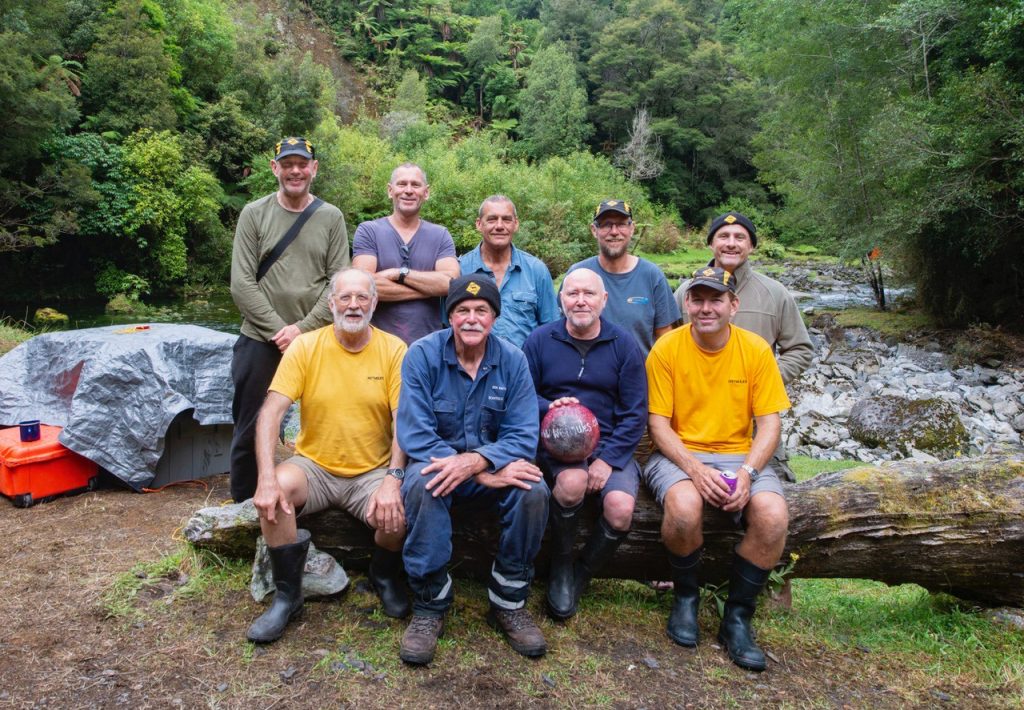
Dive Like A Mule
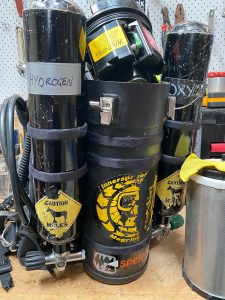
The Wet Mules have been unrelenting innovators in their quest to explore Pearse Resurgence, a project that Harris first became involved with in 2007. Ironically, in 2012, a few months before Larsson and his team made their historic 42 m hydrox dive, Dr. Harris was explaining to the delegates at Rebreather Forum 3.0, in Orlando, Florida, why he and team mate Craig Challen were giving up on open circuit bailout at Pearse—it required some 28 cylinders each to bailout from a 220 m/718 ft dive with 30 minute bottom time. Instead the pair of push divers planned to dive dual back-mounted Megalodon rebreathers connected at the BOV—a configuration they still use today. They rejected sidemount bailout rebreathers due to poorer work of breathing (WOB). They have also worked with O’Three to adapt suits and electric heat to stay warm in the chilly 6ºC/43ºF Pearse waters, and created a system of decompression habitats in the cave to make the decompression safer, and more manageable.
One could surmise, it was only a matter of time before ‘Dr. Harry,’ who is a deep diving anesthesiologist after all, would feel compelled to hit the H2. Feeling lucky today Punk?
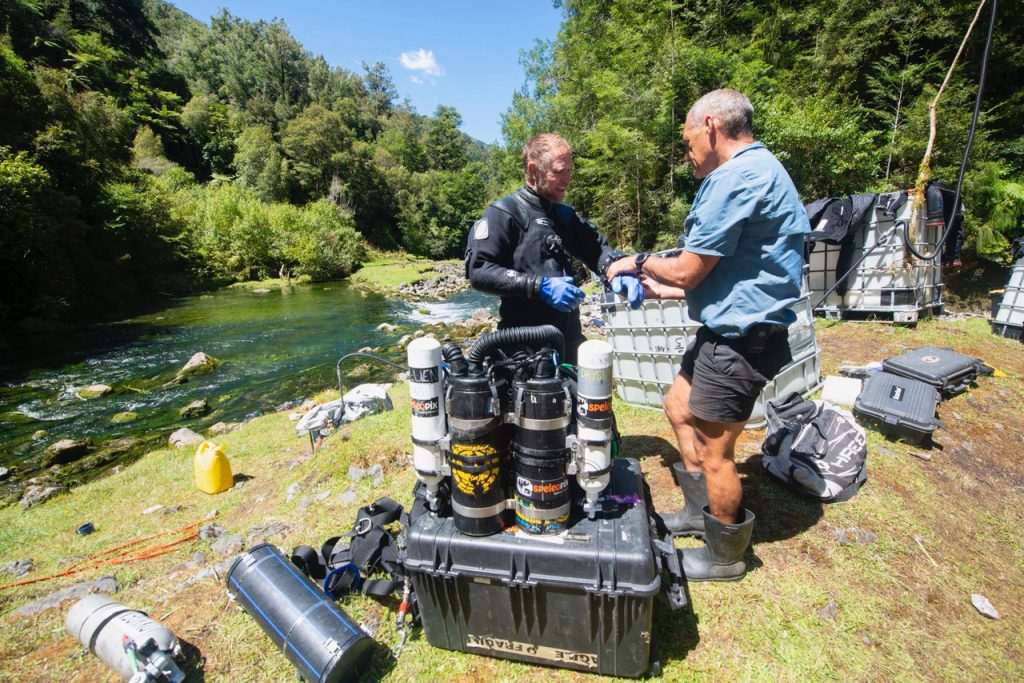
Harris will be presenting his report on his historical 230 m hydrogen rebreather dive at Pearse at the closing banquet for Rebreather Forum 4, in Valletta, Malta 22 April. His talk will be videotaped. He and Dr. Simon Mitchell, who was present with the Mules for the dive, is also preparing a paper for the Journal of Diving and Hyperbaric Medicine, and Harris will prepare a paper for The RF4 Proceedings, which will be issued in the fall.
Hydrogen Dreamin’
It is uncertain whether we’ll see a team of NIXIE tech divers—you know who you are— exploring a newly discovered 460 m/1500 ft deep shipwreck, supported by diving bells and an ROV in the next 10-20 years—think Britannic expedition on steroids! However, as tech dives continue to get deeper—the ten deepest cave dives today average 284 msw/926 fsw (adjusting for altitude and freshwater) or 75m/246 ft deeper than those of the 1990s thanks to rebreathers, while the deepest shipwreck dives today average 176 m/576 ft or 55m/180 ft deeper than those of the past— it is possible that we will see limited use of hydrogen for special, well-funded tech projects.
It is perhaps more likely that one day soon, clandestine military divers will be locking out of a subsea platform wearing dual or triple H2-enabled rebreathers to carry out some über-deep mission—though we will surely never know.
Then again, hydrogen may well just remain another geeky diving dream that proved to be a dead end, albeit one that inspired us to continue think big and boldly about underwater exploration, and helped increase our understanding and knowledge of what is required for humans to safely breathe underwater, and dive deeper, and stay longer. Isn’t that what diving is all about?
Below please find a selection of curated hydrogen diving articles and resources. We hope you find them useful. And do consider coming to Malta to hear Dr. Harry’s talk. It will be historic.—M2
See the follow -on story, N=1: The Inside Story of the First-Ever Hydrogen CCR Dive by Ashley Stewart, along with Harry’s presentation at the RF4 Banquet: N=1, the World’s First Hydrogen CCR Dive
Playing with Fire: Hydrogen as a Diving Gas
As every tekkie knows, helium is essential for deep diving due to the fact it’s non-narcotic and offers low breathing gas density. But it’s conceivable that hydrogen may one day become a part of the tech tool kit for dives beyond 200 m/653 ft, by virtue of the fact that it’s light, a little narcotic and offers the possibility of biochemical decompression. Diver Alert Network’s Reilly Fogarty has the deets.
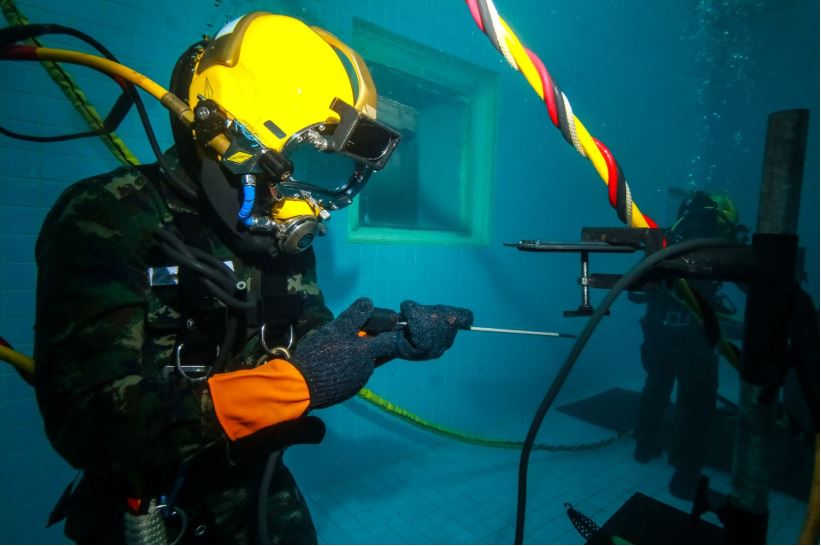
High Pressure Problems on Über-Deep Dives: Dealing with HPNS
If you’re diving beyond 150 m/490 ft you’re likely to experience the effects of High Pressure Nervous Syndrome (HPNS). Here InDepth’s science geek Reilly Fogarty discusses the physiology of deep helium diving, explains the mechanisms believed to be behind HPNS, and explores its real world implications with über-deep cave explorers Dr. Richard “Harry” Harris and Nuno Gomes. Included is a list of sub-250 m tech diving fatalities.
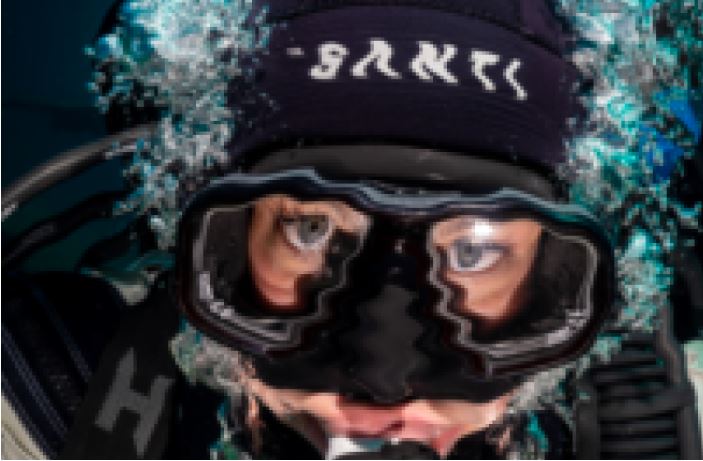
The Case for Biochemical Decompression
How much do you fart during decompression? How about your teammates? It turns out that those may be critical questions if you’re decompressing from a hydrogen dive, or more specifically hydreliox, a mixture of oxygen, helium, and hydrogen suitable for ultra-deep dives (Wet Mules, are you listening?). Here the former chief physiologist for the US Navy’s experimental hydrogen diving program, Susan Kayar, aka the ”Queen of Farts” gives us the low down on biochemical decompression and what it may someday mean for tech diving.
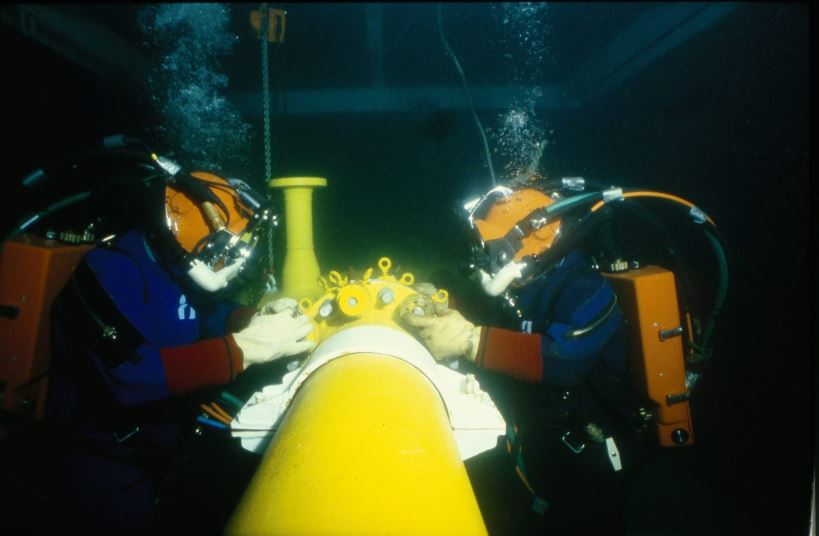
Operation Second Starfish: A Deep Diving Novel of Submarine Rescue, Science, and Friendship
You read about the science of hydrogen diving last month in a “A Case for Biochemical Decompression,” by former U.S. Navy researcher, Susan Kayar. Now read her science fiction: where experimental diving may one day take us! Retired scientific director of the Navy’s Experimental Diving Unit (NEDU), John Clarke reviews Kayar’s new novel, “Operation Second Starfish.“
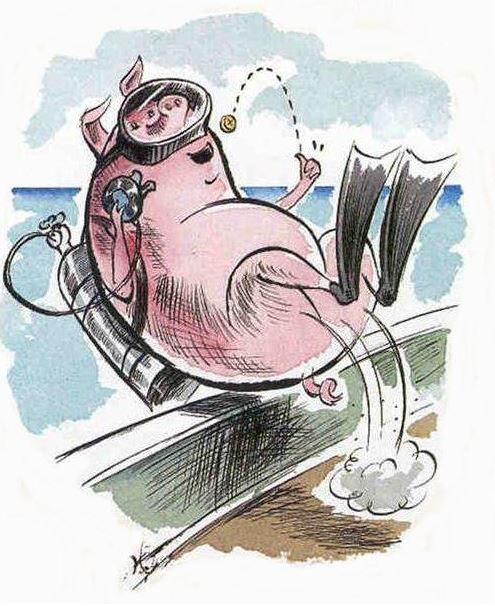
DIVE DEEPER
NDRI: Arne Zetterström and the First Hydrox Dives by Anders Lindén and Anders Muren. Swedish National Defence Research Institute. 1985
H2HUBB: The History of Hydrogen
InDEPTH: Diving Beyond 250 Meters: The Deepest Cave Dives Today Compared to the Nineties by Michael Menduno and Nuno Gomes.
InDEPTH: Maintaining Your Respiratory Reserve by John Clarke
John Clarke Online: Hydrogen Diving: The Good, The Bad, the Ugly (2021)
Hydrogen Diving – A Very Good Year for Fiction (2018)
Diving with Hydrogen – It’s a Gas (2011)
Undersea Hyperbaric Medical Society: Hydrogen as a Diving Gas: Proceedings of the 33rd UHMS Workshop Wilmington, North Carolina USA (February 1987)

Michael Menduno/M2 is InDepth’s editor-in-chief and an award-winning journalist and technologist who has written about diving and diving technology for more than 30 years. He coined the term “technical diving.” His magazine “aquaCORPS: The Journal for Technical Diving” (1990-1996) helped usher tech diving into mainstream sports diving, and he produced the first tek.Conferences and Rebreather Forums 1.0 & 2.0. In addition to InDepth, Menduno serves as an editor/reporter for DAN Europe’s Alert Diver magazine, a contributing editor for X-Ray mag, and writes for DeeperBlue.com. He is on the board of the Historical Diving Society (USA), and a member of the Rebreather Training Council.





























